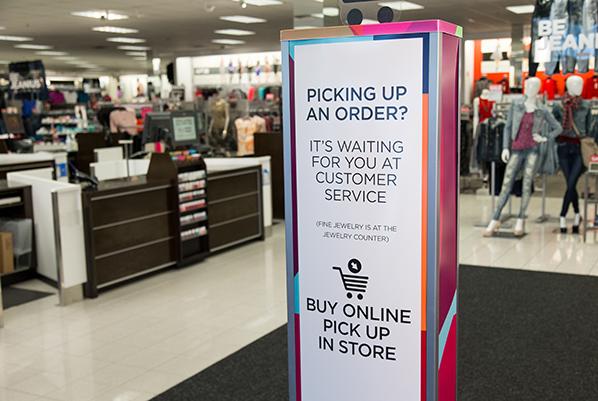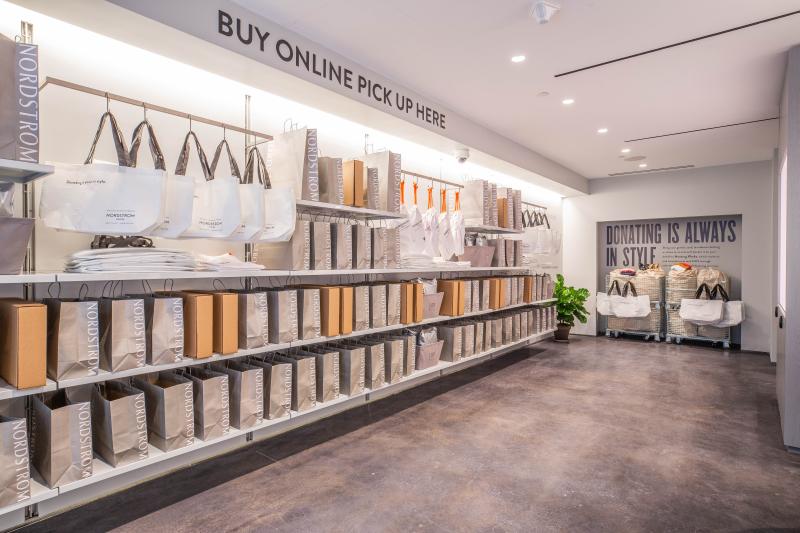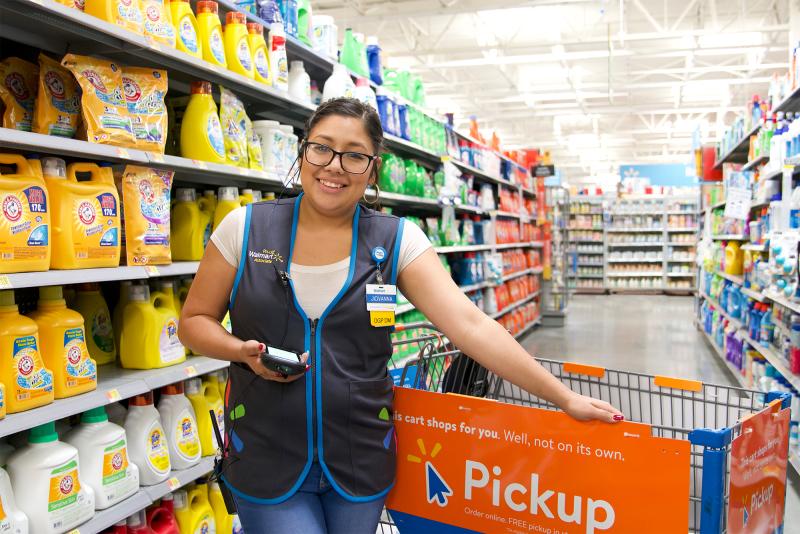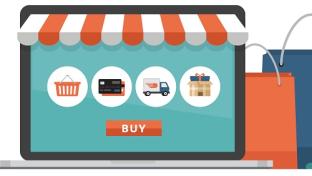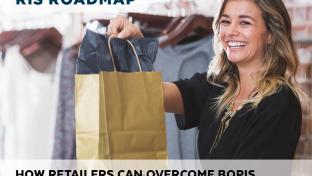10 Retailers Riding the BOPIS Wave
Shoppers Motivations to Use BOPIS in the 2019 Holiday Season
72% Convenience
68% Allows me to save money
56% Reduces shipping costs
54% Allows me to search for more deals online
-RetailMeNot Survey on 1,000-plus consumers
Buy-online-pickup-in-store, better known as BOPIS, isn’t just a retail technology trend — it’s becoming a staple of modern retail.
This holiday season, 60% of retailers planned to implement BOPIS tactics, up from 52% in 2018, according to a RetailMeNot survey, which also found 85% of shoppers were motivated to purchase with BOPIS options this season.
In early December, Adobe reported that for the season to date, BOPIS had grown 40.9%, with consumers 20% more likely to convert with retailers who offer BOPIS vs. those that don’t. This was especially true on the big days, with Cyber Monday conversion at BOPIS retailers outperforming non-BOPIS retailers by 45%; and Black Friday BOPIS retailer conversion outperforming non-BOPIS by a whopping 64%.
As retail moves into 2020, the experience may still need some work but the implementation plans are clear: BRP found 77% of retailers will have the service implemented within two years, in its 2019 Special Report.
Top retailers are ahead of the curve, having recognized early on the benefits of this fulfillment method. Target, for example, saw its digital sales surge 31% in its third quarter, with its same-day services accounting for 80% of that growth, which include BOPIS, Drive Up, and same-day delivery via Shipt. While the slowest growing of the same-day services was BOPIS, it still still grew more than 50%.
Given that these same-day options rely on Target’s store assets, team and inventory, they are much more profitable than traditional e-commerce fulfillment, CEO Brian Cornell said. When Target fulfills an online order from the back of its stores versus shipping from a distribution center, “about 40% of the cost goes away,” he noted said during an interview on “Squawk Box." When customers order online and pick up at a store, use curbside pickup or select shipping via Shipt, “about 90% of the cost goes away.”
Beyond helping with last mile logistics and fulfillment costs, BOPIS service hands greater control to consumers and, according to Gartner, environmentally-conscious shoppers are using pick-up more often as a means to reduce carbon emissions and packaging.
“Economically, a BOPIS model makes great commercial sense,” Tom Enright, vice president analyst, Gartner, said in November. “On the one hand, retailers save shipping costs. On the other hand, online shoppers visit physical stores and might be enticed to make additional purchases. The key is to tune the service and consumer experience to achieve maximum benefit for both parties.”
While the benefits are clear, many retailers are still working on both rollout strategies and improvements as we enter the New Year. So, where are retailers at with their BOPIS plans in 2020? Below, RIS examines the boom of BOPIS at some of the nation’s top retailers.
Best Buy
On average 80% of Best Buy’s BOPIS orders are ready in less than 30 minutes and 40% of Best Buy’s online sales are coming from BOPIS, the retailer noted during its third quarter 2020 earnings call.
Big Lots
Big Lots’ third quarter 2019 was its first full quarter in which it offered buy-online-pick-up-in-store. The option now available in all stores and CEO Bruce Thorn said in its recent earnings call that its customers’ response continues to exceed expectations. The service has nearly doubled the number of viewable skews online; Big Lots continues to receive more orders per day, per store than anticipated; and the average order value continues to trend higher than the retailer’s original estimates. The rollout of BOPIS has also meant that Big Lots’ e-commerce operation as a whole is now profitable, Thorn said, and it will remain a major area of focus for the retailer in 2020.
Dollar General
Dollar General plans to pilot DG Pickup, its buy-online-pickup-in-store service, during the fourth quarter 2019.
“Our digital efforts are focused on making things easier for our customers by providing an even more convenient, frictionless and personalized shopping experience,” said CEO Todd Vasos. “Importantly, these efforts will continue to be tailored specifically to the Dollar General customer and remain an important component of our long-term growth strategy.”
GNC
GNC Holdings, Inc. is on track for an early 2020 launch of a new order management system that will support the rollout of mobile in-store POS in 2020 and will make it possible for customers to buy products online and pick them up in the store, or have what they need shipped from a GNC store directly to their home, CEO Ken Martindale confirmed in a recent earnings call.
Kohl's
Kohl's, which rolled out buy-online, pick-up in-store in nationwide in 2015, said in its third quarter 2019 in-store customer pickup penetration further increased as a percent of digital orders. The retailer also noted it is speeding up the process now, with 95% of BOPUS orders available within one hour. Kohl’s stores nationwide kept their doors open around the clock for last minute holiday shoppers from Dec. 20 through Christmas Eve, and shoppers could place orders as late as 3 pm local time on Christmas Eve, for in-store pickup as late as 6 pm that night.
Lowe’s
Last year the home improvement retailer rolled out around 88,000 smart mobile devices to its stores that have functionality to process BOPIS orders, which took Lowe’s from a 12-step paper-based process to an average of two digital scans.
“The new smart device reduced tasking hours by providing associates with real-time data without ever-stepping up the sales floor,” EVP, Stores, Joseph McFarland said.
“In the first quarter (2019) 60% of our online purchases were picked up in our stores which reinforces the power of our omnichannel model,” he continued. “The role of smart devices in the systematic improvements in BOPIS represents a significant advancement in the partnership between our stores in IT, and are really terrific early examples of what we can accomplish as an organization when we are focused and aligned.”
Lululemon
The athletic apparel retailer’s digital revenue grew 30% in constant currency terms in its third quarter 2019, on top of 46% growth in the same quarter a year earlier. It offered its BOPIS capabilities in nearly all North American stores for the entire quarter and saw approximately 20% of these shoppers are making an additional purchase when they come into the store to pick up their online order.
“We're excited with our guest engagement here and expect it only to grow in importance during the holiday season,” said CEO Calvin McDonald in December.
Nordstrom
“Order pickup is our most profitable transaction,” co-president Erik Nordstrom said in a recent earnings call.
In the third quarter 2019 one half of the department store’s digital sales growth came from order pickup and in Los Angeles, where the company is most advanced in its market strategy, two thirds of digital sales growth came from in-store or pickup.
“That's going to be a big part moving forward and we are like barely in the first inning on that one,” said Erik Nordstrom.
Walmart
Walmart’s Grocery Pickup service that allows customers to order their groceries online and pick them up in stores, even without getting out of their cars, is now available in nearly 3,000 stores, the retailer reported in September. In October, Walmart hit another Grocery Pickup milestone – customers in 2,000 locations in 29 states, can use the service for alcoholic beverage purchases.




c314.jpg)

